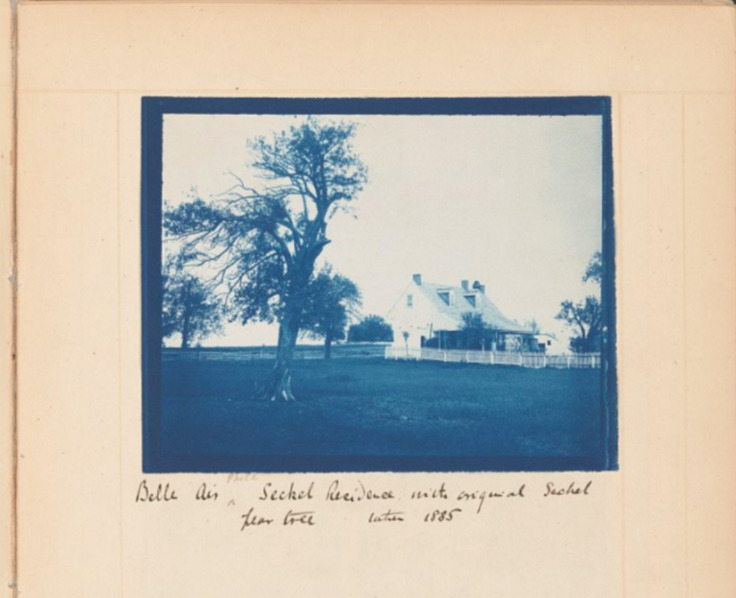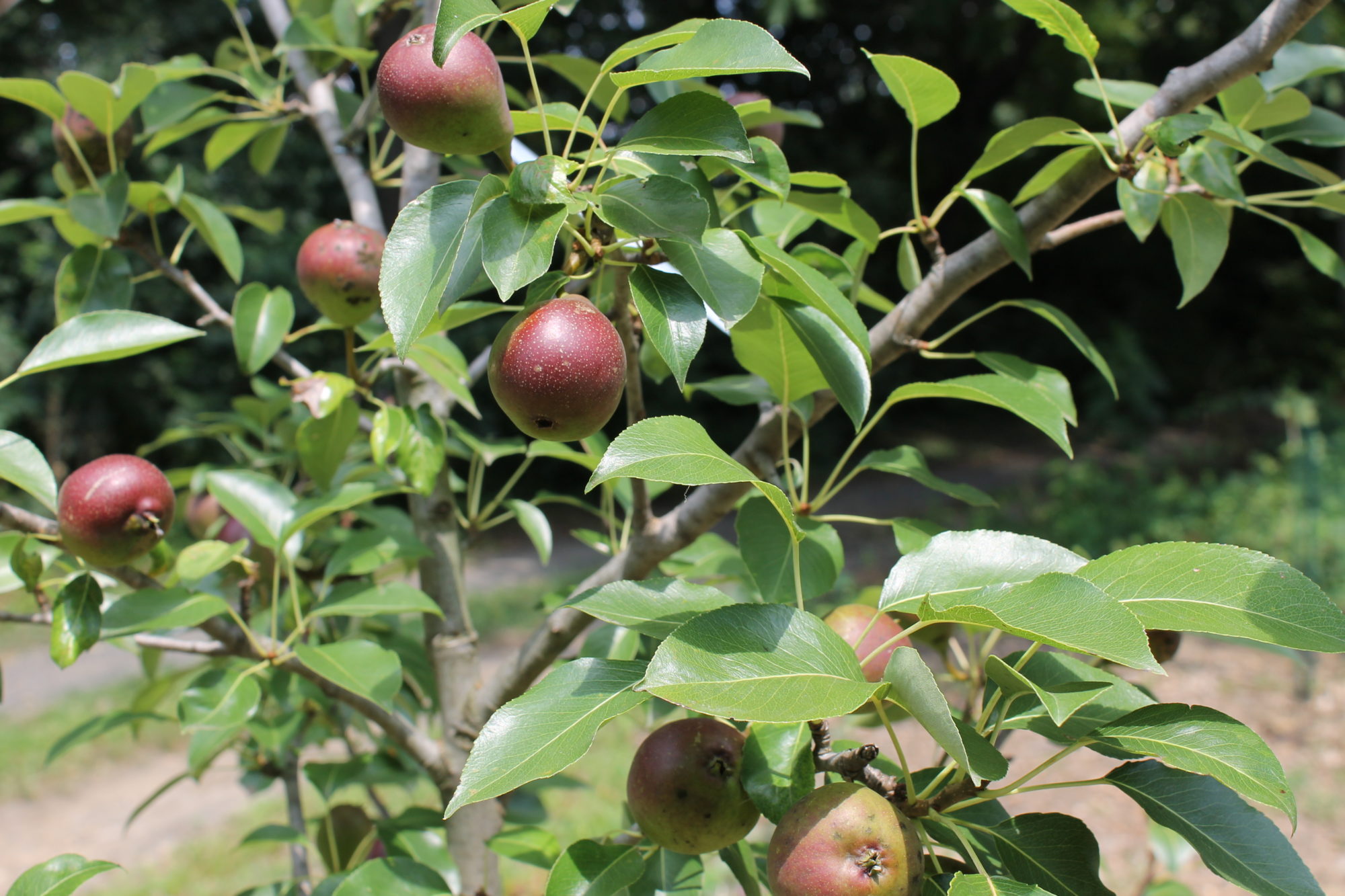How a despised little fruit became a local treasure
If you’re fond of pears, or novel fruit, you might have come across a Seckel once or twice in your life. It’s like a baby pear—sixty-percent smaller than your average Anjou, Bosc, or Bartlett, olive green with a ruddy blush, and so sweet it is sometimes called the “sugar pear.” It turns out Seckels got their name from a Philly native, one Lawrence Seckel, who lived at Bellaire Manor, which still stands in what is now called South Philly Meadows (the former golf course at FDR Park). Sometimes I catch a glimpse of the manor through the meadows. The goldenrod and boneset being timeless and ever-what-they-are, I glimpse the manor’s silhouette in the distance and have that eerie feeling of walking into a history book.

(Photo: Library of congress. Cyanotype taken in 1885 Reference number 2016647948)
Bellaire Manor was the house of Lawrence Seckel, a prominent wine merchant of the day. He did not cultivate the pear named after him, but found it on his grounds, or rather she found him, depending on your point-of-view. Here’s the story. They used to call the southern most part of South Philly “the Neck.” About one mile north of the confluence of the Delaware and Schuylkill rivers, jutting out like a bristly mole from the Neck, used to stand a decrepit, half-decaying pear tree. It was planted by a previous owner—a Swede or Dutchman perhaps—but had gone untasted for many a year. Some speculate it may even have been birthed from a wild seedling spit out by a German, dropped by some sparrow or buried by a minuscule ant. Who knows? Regardless of the specifics, Seckel is a uniquely American variety originating at what is now FDR Park in Philadelphia!
An excerpt from The Youth’s Companion, dated 1891 writes, “No one thought of eating the insignificant pears, not much larger than marbles, and the tree was condemned as worthless, while its fruit rotted on the ground or was eaten by cows and goats.”
Moo. Maaah. Yum.
Lawrence Seckel’s father even threatened to cut down the tree on more than one occasion, but the geriatric pear persevered until Lawrence became the owner of the estate in 1777. “One afternoon,” the Youth’s Companion story continues, “Mr. Seckel was returning from a long walk and chanced to pass beneath the worthless tree. He stood for a minute resting in its shade. Suddenly a pear dropped, struck him upon the head, from which he had removed his hat, and rolled into his open palm.” I mean…we have to pause here to really savor the almost Newtonian or Chaplin-esque dimensions of this description—half divine intervention, half award-winning slapstick. The pear hits Seckel on the head, AND THEN rolls (down his what… arm?) and lands squarely in his open palm. Wow. I’m a cynic so I’m inclined to say he made it all up to sell more pears, or the journalist more magazines, but they’re both dead, so I’m gonna let’m have it. You can believe what you want.
Back to the Youth’s Companion. “Half-automatically he fumbled the fruit between his fingers and was in the act of throwing it away when it occurred to him to bite it. ‘I had thought myself a connoisseur in pears,’” Seckel reportedly said, “but I never tasted the equal of that aforetime despised little fruit.”

After this first miraculous encounter, Seckel wasted no time cutting some remaining vital branches from the mother tree, grafting them to new root stock, and delivering his precious new discovery out of the bogland up onto higher ground. He quickly turned the despised little fruit into a hot commodity. Thomas Jefferson even planted Seckel at Monticello and claimed the pear was as good as any in France. Nowadays, the cultivar is an established pillar of fruit production. Lawrence Seckel died in 1823. The original Seckel tree, as shown in the photograph, outlived her namer by at least sixty years, but eventually perished. She no longer stands upon the Neck of Philadelphia, but her progeny will undoubtably carry her sweet-petite fruits into the future. So when you first (or next) bite into a Seckel pear, think of her and all the forsaken fruit trees in your midst. What treasures they may harbor! I certainly know a few gnarly old geezers I’m going to take a second look at.
This POP Blog was written by volunteer Anisa George. Thank you so much to Sarah E. B. Kocher and Cheryl Brubaker for generously sharing the archives which lead to the writing of this blog post.
SUPPORT US! If you found this entry useful, informative, or inspiring, please consider a donation of any size to help POP in planting and supporting community orchards in Philadelphia: phillyorchards.org/donate.